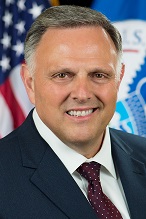November is Critical Infrastructure Month, and each week, the Department of Homeland Security (DHS) Science and Technology Directorate (S&T) is highlighting our work in a specific sector.
Sixteen sectors within the United States have been designated as “critical infrastructure” due to their extreme significance to daily life. Their disruption or destruction would represent a severe national security threat, so steps must be taken to ensure each sector is secure and can survive a natural or manmade disaster. S&T projects focus on different aspects of these sectors, finding ways to make them more secure or resilient.

Science and Technology
William Bryan
Week 1: Commercial Facilities
This week, we’re focusing on the Commercial Facilities Sector, which includes public venues and sites that attract large crowds such as those used for entertainment, gaming, lodging, outdoor events, public assembly, real estate, retail, and sports leagues.
The United States is an open society, where people can travel and assemble freely, but those freedoms come at a price. This sector has a large number of locations that are attractive to terrorists and other adversaries. S&T is committed to helping security personnel develop and deploy multi-layered systems of defense to defeat these threats.
When it comes to explosives detection, an experienced canine team is one of the best, most versatile and cost-effective mobile solutions. S&T’s Regional Explosives Detection Dog Initiative (REDDI) is a good example of the efforts aimed at advancing the knowledge and capabilities of our nation’s explosive detection teams.
An intense training program for canine explosive detection teams, REDDI includes classroom and real-world field exercises. It provides the tools, techniques and knowledge that best prepare the canine teams to be a part of the multi-layered protection of commercial facilities, including stadiums and sport facilities.
Ensuring that new technologies are consistently being used is another layer of protection.
S&T’s Support Anti-Terrorism by Fostering Effective Technologies (SAFETY) Act of 2002, encourages the private sector to deploy and develop effective technologies capable of responding to, preventing, detecting, or deterring acts of terrorism by providing liability protections in the event of an act of terrorism. Technologies include products, services, software, and intellectual property. Many high-profile critical infrastructure facilities have achieved some level of SAFETY Act protections, as well as private security contractor personnel/technologies deployed at those venues. Visit www.safetyact.gov to see the full list of SAFETY Act Approved Technologies.
Developing a robust communication capability represents another important security layer. S&T’s First Responders Group is leading innovation through datacasting technology. Simply put, datacasting reallocates a certain amount of bandwidth on already existing public television channels to transmit encrypted communications to first responders. Delivering the high priority incident information through text, voice, pictures, and/or video to those who need it most enables greater situational awareness, analysis, and response.
S&T understands the Commercial Facility Sector risk landscape. Securing venues requires building public-private partnerships and getting new tech and best practices to the market. To do this, S&T draws on our technical expertise to equip responders and encourage innovation. For more information about our work in the Commercial Facilities Sector and critical infrastructure at large, follow S&T on Twitter, Facebook, and LinkedIn.
